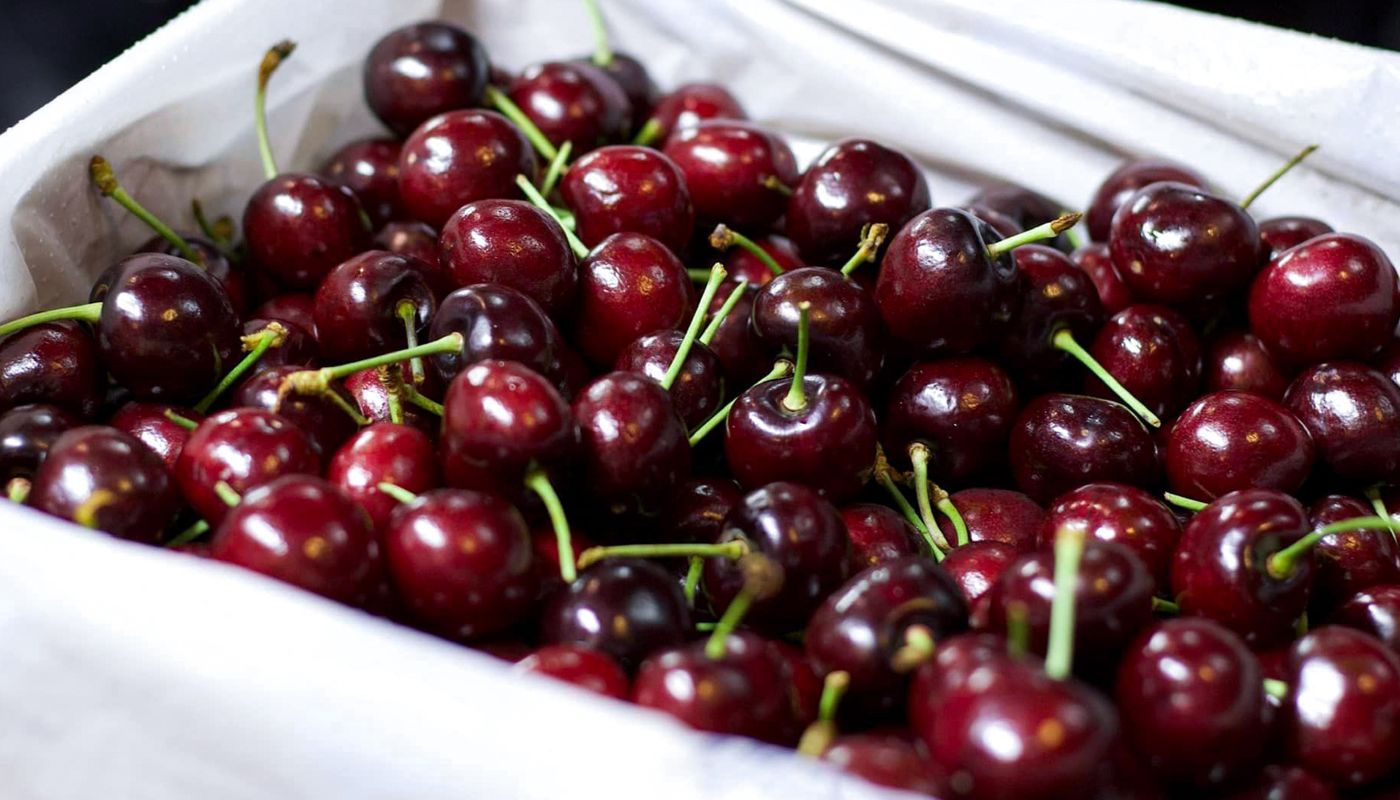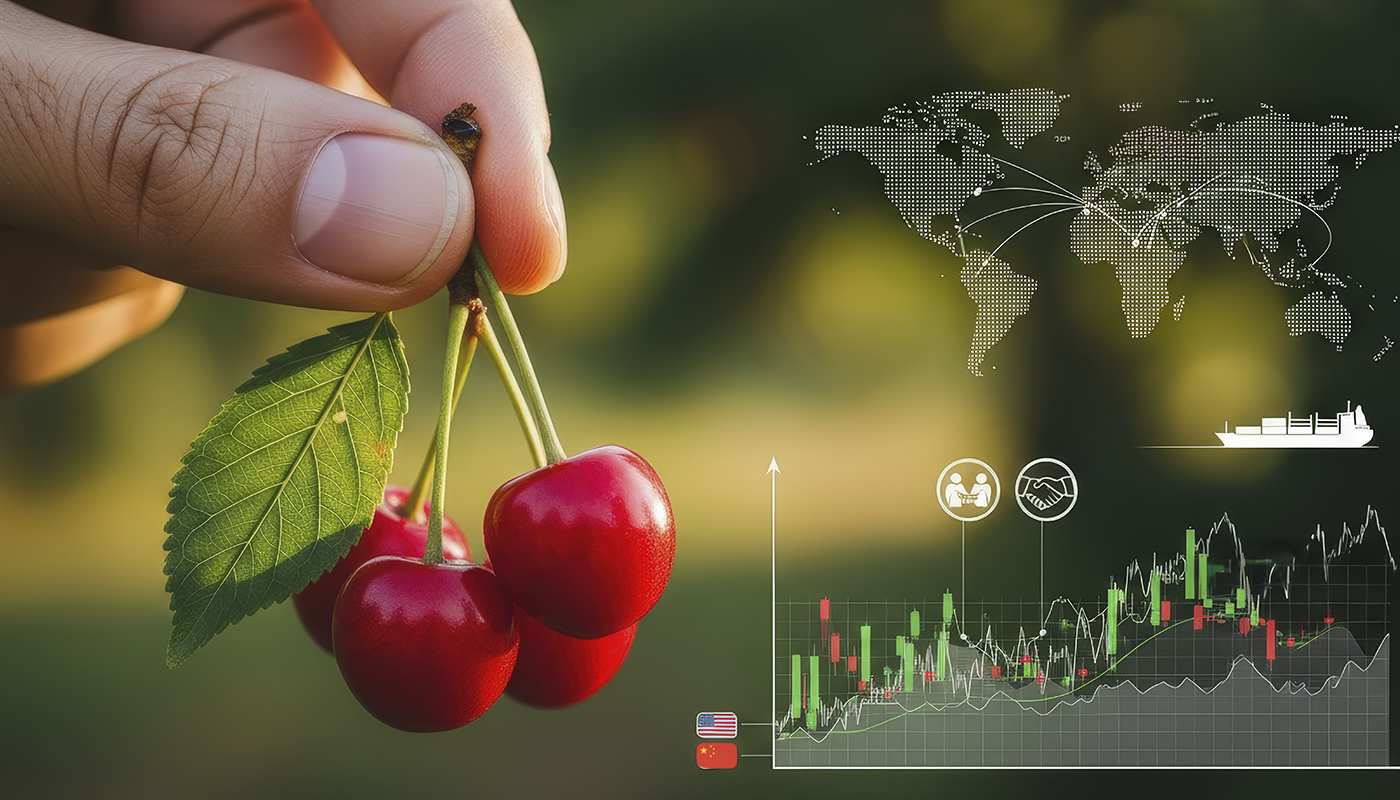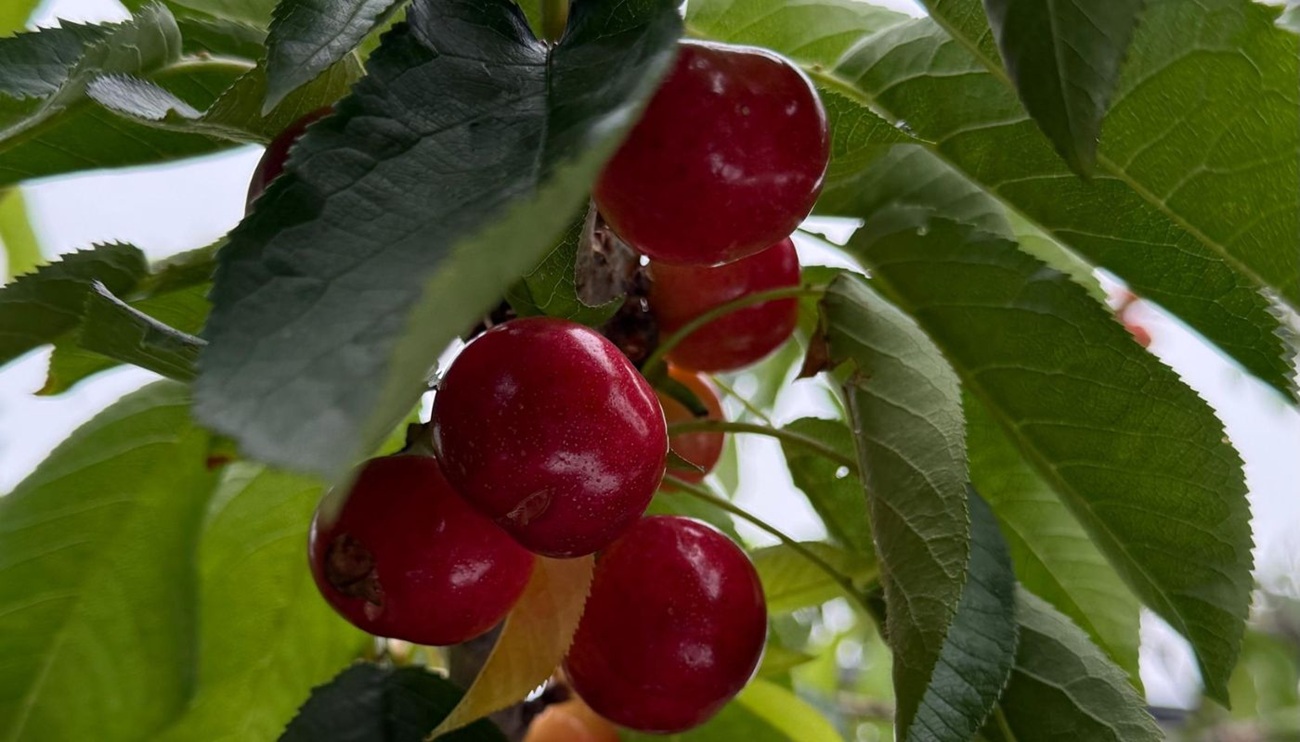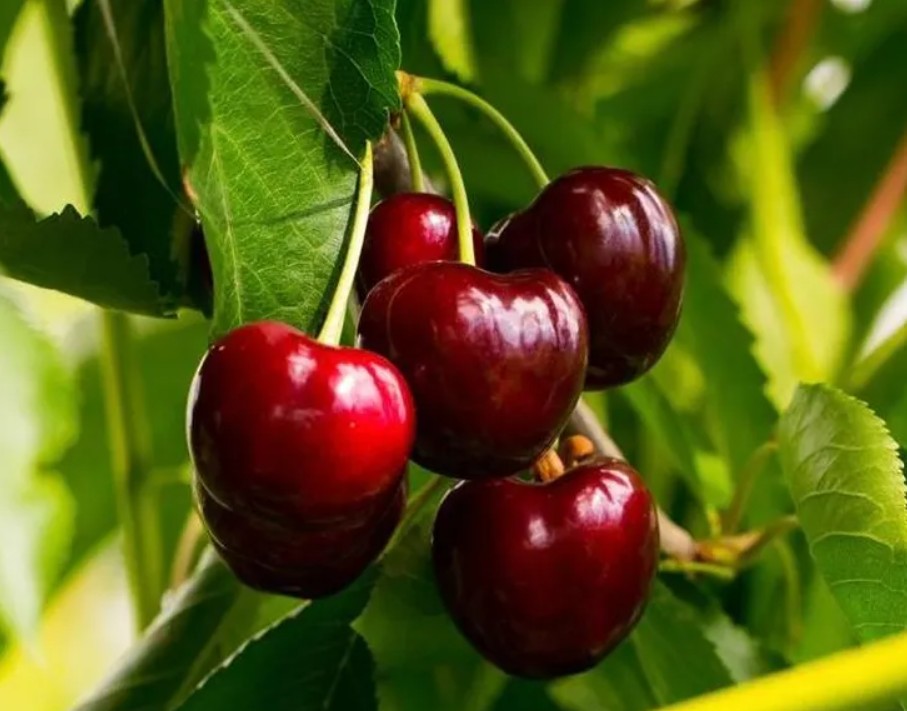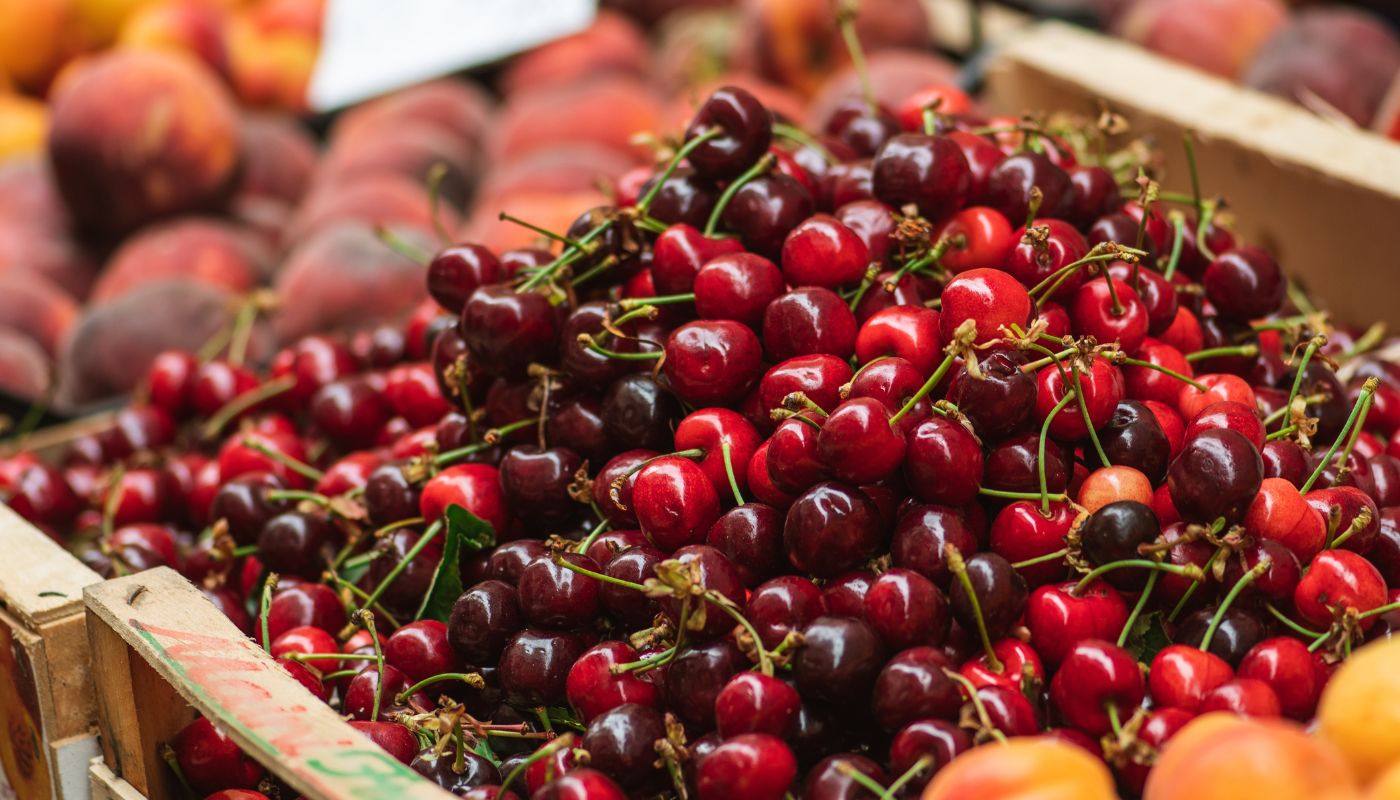The arrival of the first cherries of the 2025 harvest to the Argentine domestic market marked a historic turning point: prices reached record levels in both wholesale markets and retail stores, driven by limited supply and sustained demand from high-income consumers.
The harvest began last week with the arrival of the first shipments from Mendoza, and shipments from other producing regions, especially northern Patagonia, are expected in the coming days. This early arrival, in a context of low fruit availability, generated exceptionally high prices across all market segments.
Unprecedented prices at the Central Market
According to data compiled by the Central Market of Buenos Aires (MCBA), wholesale cherry prices reached a record high of 30,400 pesos per kilo on Wednesday, October 29, representing an increase of over 350% compared to the same date last year.
The fruit currently being sold at the MCBA is of the Nimba variety, classified as “select” and medium-sized, while at the same time last season, the Royal Lee variety, also selected quality, was available, although sold in bulk.
Variet and presentation differences may partially influence price comparisons, but even considering these factors, the price jump is undeniable and reflects a much more active and competitive market than that observed in 2024.
The impact on retail trade
The sharp increase is not limited to the wholesale segment. In the main retail outlets of the northern corridor of Greater Buenos Aires (CNGBA) and the Autonomous City of Buenos Aires (CABA), the price of cherries reached up to 45,000 pesos per kilo, equivalent to about US$31 per kilo at the official exchange rate. This price is three times higher than on the same date last year, confirming a strong price appreciation trend for the product in the domestic market.
However, experts clarify that, unlike last year, the margins between wholesale and retail prices have not widened as much, indicating that a significant portion of the increase is concentrated in the second link of the chain, that is, between the wholesaler and the retailer.
Taking November 29, 2025, as a reference point, wholesale prices averaged 29,600 pesos per kilo, showing a year-on-year increase of over 400%. This unusual behavior is mainly due to shortages in the domestic market and the limited availability of quality fruit.
“Consumers pay for quality”
Sources at the Central Market consulted by +P explained that the price increase is partly due to a market shortage, where early availability of the fruit is minimal. “Today, those who buy cherries at this time of year are high-income consumers, from the ABC1 segment, who are willing to pay these prices because they are looking for quality. And when the product is good, price ceases to be an obstacle,” stated a representative from the Central Market of Buenos Aires (MCBA).
In that regard, the specialist highlighted that a good quality cherry on a supermarket shelf in northern Buenos Aires province—such as in the Pilar area—currently reaches 45,000 pesos per kilo, a figure that, according to analysts, even exceeds the net return from exporting to international markets.
Competitiveness against the chinese market
The attractiveness of the domestic market is amplified when comparing logistics costs and export prices. While in China, one of the main destinations for Argentine and Chilean cherries, the price per kilo exceeds $40 at this time of year, freight, packaging, and international logistics costs significantly reduce the producer’s profit margin.
In contrast, selling domestically offers more direct profitability with lower risks, especially considering that transport from the packing shed to major consumption centers—such as Buenos Aires—does not exceed 1,300 kilometers in the worst-case scenario. This logistical advantage positions the domestic market as an increasingly attractive alternative for exporters, at least at the start of the season.
Outlook for the coming weeks
Industry analysts anticipate a larger volume of cherries arriving from Mendoza and northern Patagonia in the coming weeks, which could moderate prices as supply increases. However, they caution that prices are unlikely to return to last year’s levels due to production costs and the country’s overall inflationary pressure.
Nevertheless, local producers are concerned about the potential arrival of Chilean cherries in the Argentine domestic market. Chile is one of the world’s largest exporters of the fruit, with significantly higher production and more competitive costs.
“The influx of Chilean cherries could cause a price collapse and affect the profitability of Argentine producers,” industry representatives stated. “In a context of high domestic costs, any external competition could leave local producers with no profit margin.”
An expanding market, but with challenges
The surge in Argentine cherry prices demonstrates the growing appreciation of this product as a premium consumer good, linked to purchasing power and seasonality. However, it also highlights the need to plan production and logistics to avoid supply shortages that would drive up prices and limit access for the average consumer.
As the season progresses and supply volumes stabilize, the sector expects a price readjustment, although it is possible that the overall average will remain the highest recorded in recent years.
According to sources at the Buenos Aires Cherry Market (MCBA), the Argentine domestic market, historically secondary to exports, could consolidate itself this year as a profitable and strategic sales destination for Argentine cherries, provided that a balance between quality, availability, and price is maintained.
Source: Más Producción



